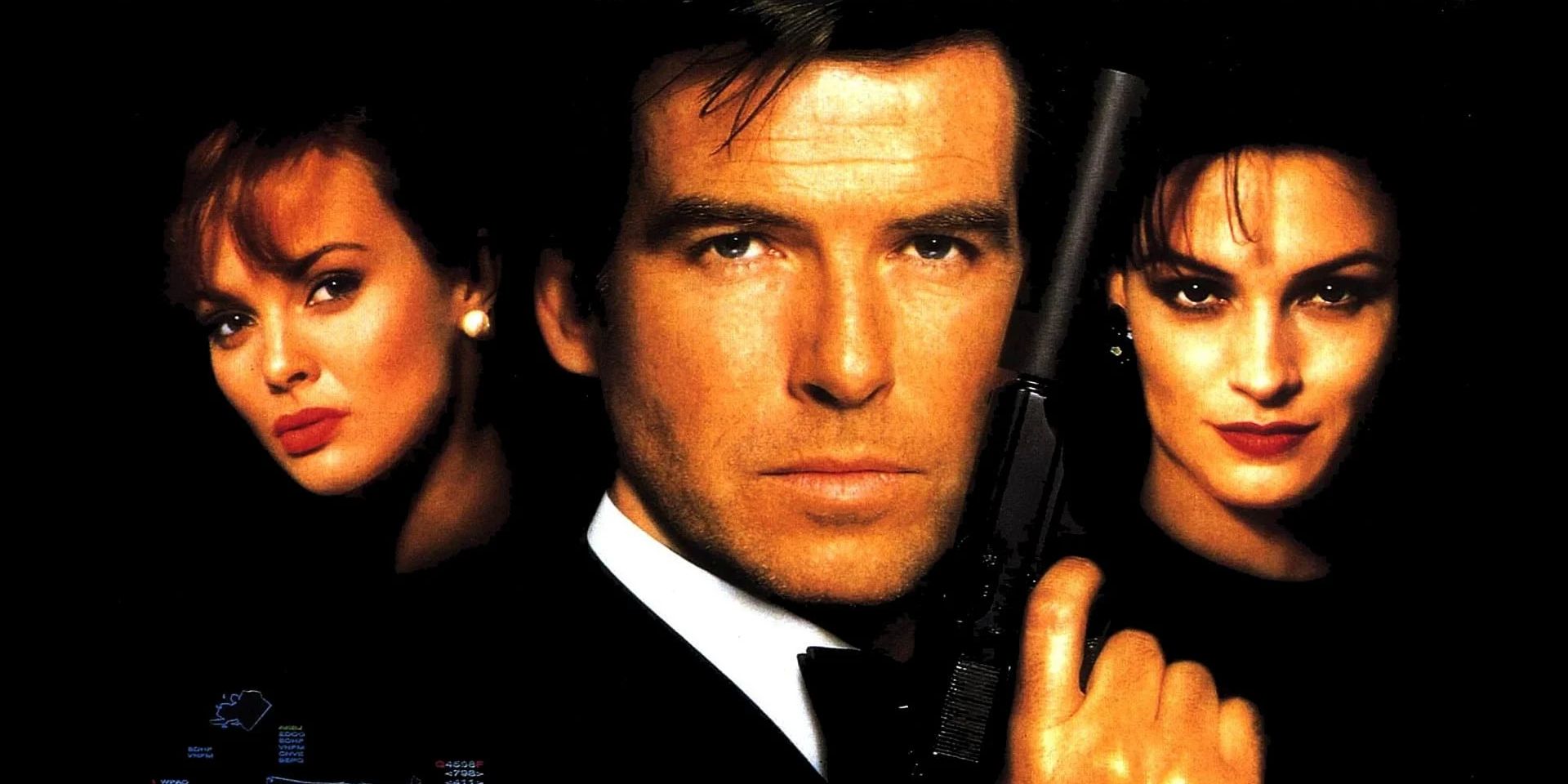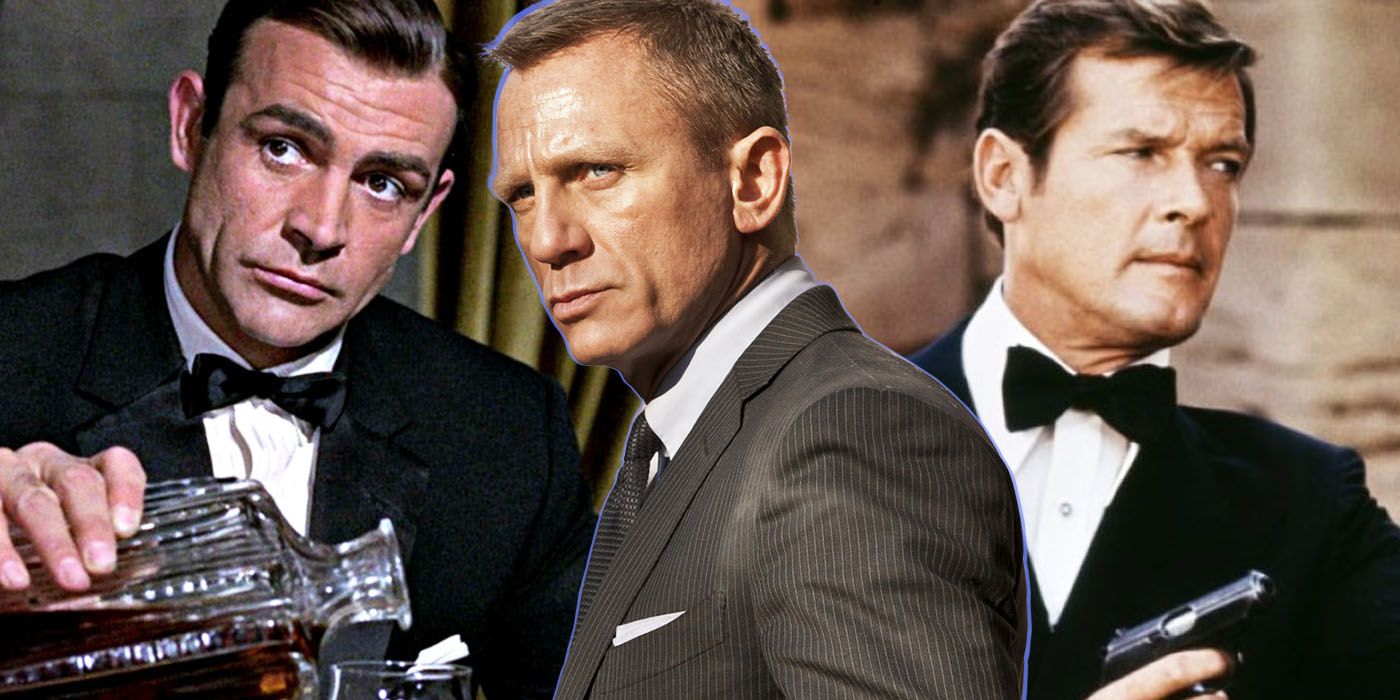Summary
- Daniel Craig has had the longest tenure as James Bond, spanning from 2006 to 2021, and is credited with rejuvenating the franchise with a grittier and more realistic approach.
- Sean Connery defined the role of James Bond and originated the character on the big screen, playing him in the first five films. He returned for a sixth film and shares the top spot with his most prolific successor.
- Roger Moore had a great run as James Bond from 1973 to 1985, appearing in seven films. He brought a breezy and playboy adventurer attitude to the role, making his Bond particularly distinctive.
With No Time to Die, Daniel Craig officially bowed out as James Bond, leaving the franchise to face the inevitable task of selecting a new actor for the role. It's become a ritualistic part of 007, almost as much as the Q-branch gadgets and the villains' secret lairs. Unlike other long-standing franchises, such as Star Trek and Star Wars, Bond is centered around an individual. Recasting for a new James Bond actor is necessary, allowing the character to be reinvented for changing times.
The six actors to play the role have a mixed track record for longevity, and even the series stalwarts grew weary after a time. The Bond franchise has a reputation for arduous shoots- owing to the stunts and set pieces that made its name- which can particularly try on the leading man (who needs to be onscreen for the vast bulk of the film). But which actor has played 007 in the most movies? The winner is not apt to be unseated anytime soon.
Updated by Jordan Iacobucci and Robert Vaux on May 5, 2024: The search is still on for the next actor to take on the iconic role of James Bond. Fans are looking back on the actors who have gone before as they anxiously await news on who will be the next 007. The article has been expanded to include additional information, and the formatting has been adjusted to meet current CBR guidelines.
George Lazenby Was A One-Off Bond
"This never happened to the other fellow."
|
Appearances |
Written by |
Directed by |
Release Date |
Running Time |
|---|---|---|---|---|
|
On Her Majesty's Secret Service |
Richard Maibaum |
Peter R. Hunt |
December 18, 1969 |
142 minutes |

'I'm Available': GoldenEye Star Wants a Female 007 in Next James Bond Movie
One GoldenEye star is advocating for a female 007 in Bond 26.Lazenby made only one turn as Bond in 1969's On Her Majesty's Secret Service, released after Sean Connery departed the role. According to Kiss! Kiss! Bang! Bang! The Unofficial James Bond Film Companion, the producers wanted Roger Moore to replace Connery and intended to make The Man With The Golden Gun the next project. The war in Cambodia forced a change in plans—the film is set there—and Moore took the lead in the TV series The Saint. The 007 role went to Lazenby.
However, the actor couldn't match his predecessor's onscreen presence. He came across as passive and detached rather than cool and professional and failed to connect with Diana Rigg's Bond girl in what turned out to be one of the most important relationships in the series. While the film scored high overall marks, the producers convinced Connery to return for the next outing. Therefore, Lazenby's tenure as James Bond becomes the shortest of any Bond actor: a mere footnote in the longer history of the franchise.
Timothy Dalton Had Two Great James Bond Films
"We have an old saying too, Georgi. And you're full of it."
|
Appearances |
Written by |
Directed by |
Release Date |
Running Time |
|---|---|---|---|---|
|
The Living Daylights |
Michael G. Wilson & Richard Maibaum |
John Glen |
July 31, 1987 |
130 minutes |
|
License to Kill |
Michael G. Wilson & Richard Maibaum |
John Glen |
July 14, 1989 |
133 minutes |
Dalton fared better than Lazenby in the eyes of Bond fans over time, though it took a while to get there. Although it almost went to Jurassic Park's Sam Neill, Dalton was originally brought on in lieu of Pierce Brosnan, whom fans considered the natural heir to Roger Moore following the success of his TV show Remington Steele. According to the director's commentary on The Living Daylights DVD, NBC spiked the deal that would have made Brosnan the new 007. Dalton was brought in to replace him and initially earned the scorn of fans in response.
The box office failure of his second film, 1989's License to Kill, ended his brief run and put the whole series in limbo for a few years. Fans have subsequently warmed to his comparatively gritty and straightforward take on the character, however. The Living Daylights remains a first-tier entry, with strong action scenes and a badly needed sense of freshness. While License to Kill can't match that, it's also one of the grittiest of the pre-Craig Bonds. After Roger Moore's tenure of the playboy superspy, it effectively reminded the audience that there was nothing fun about 007's world. It leaves Dalton's turn extremely well-regarded, however brief.
Pierce Brosnan Was The Bond Of The '90s And 2000s
"They'll print anything these days."
|
Appearances |
Written by |
Directed by |
Release Date |
Running Time |
|---|---|---|---|---|
|
Goldeneye |
Jeffrey Caine & Bruce Feirstein |
Martin Campbell |
November 24, 1995 |
130 minutes |
|
Tomorrow Never Dies |
Bruce Feirstein |
Roger Spottiswoode |
December 19, 1997 |
119 minutes |
|
The World Is Not Enough |
Neal Purvis, Robert Wade & Bruce Feirstein |
Michael Apted |
November 26, 1999 |
128 minutes |
|
Die Another Day |
Neal Purvis & Robert Wade |
Lee Tamahori |
November 22, 2002 |
134 minutes |
Despite a comparatively lengthy stint in the role, Brosnan suffered from a lack of strong scripts and poor timing, which found the franchise searching for a new direction following the end of the Cold War. While the actor proved more than game, the films fell into a bit of a rut, seeking new ways to reinvigorate the formula without taking any appreciable risks. With competitors like Men in Black and the first Mission: Impossible movie, Bond suddenly felt dated and old.
1995's GoldenEye brought new energy after a six-year hiatus, and Brosnan was able to carry that for three more films -- aided most notably by Judi Dench, who made her debut as M in the Brosnan era. They failed to make any strong impression, however, and while they all turned a profit, they began to feel more pro forma each time. The era's emphasis on sci-fi spectacle -- marked by the Star Wars prequel trilogy -- also pulled 007 into more outlandish directions, with gadgets and settings that shattered the franchise's already delicate sense of plausibility. By the time 2002's Die Another Day delivered an ice fortress and an invisible car, it was clear that the actor's fourth movie would be his last.

